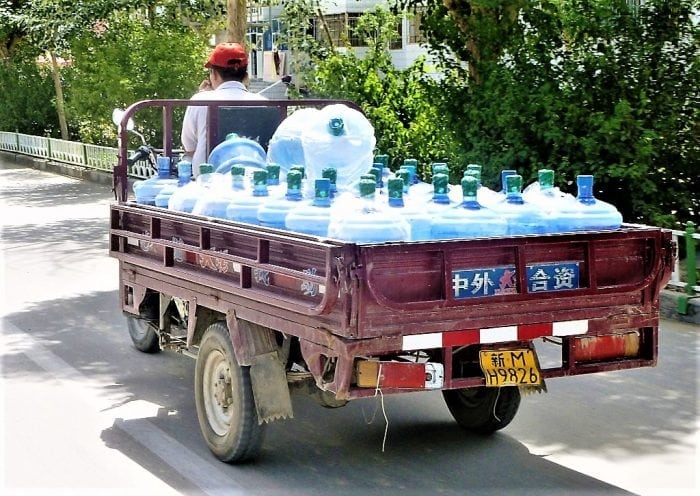
Bottled water has become an alternative to running water for many people around the world. There is a general belief that bottled water is healthier than running water in most places. But recently, the WHO has found that 90% of bottled water contains microplastics.
According to The Guardian, there is currently a review by the World Health Organization into the risks of microplastics in drinking water. The review was launched as the result of two separate studies.
The first study found that there were high levels of plastic in tap water. But even more alarming was the second study that found that there are also microplastics in as much as 90% of the bottled water consumed in the world. This would affect the most popular brands of bottled water that are consumed daily in most countries around the world.
This recent study was conducted in 19 different locations in nine different countries. Scientists analyzed as many as 259 bottles of water from 11 different popular brands. On average, scientists found 325 plastic particles per liter.
The amount of plastic varies from bottle to bottle. But as the specific example that was highlighted in the study was that of one bottle of the popular brand Nestlé Pure Life. Tests conducted on the contents of that particular bottle revealed that it contained as many as 10,000 tiny pieces of plastic for each liter of water.
According to this study, only as little as 17 bottles of the 259 bottles examined were free of microplastics.
Plastic In Bottled Water
The research was conducted by Orb Media, which is U.S. nonprofit journalism organization.
All the tests were contacted at the State University of New York.
The microplastic that was found in the overwhelming majority of those plastic bottles includes the following:
- Polypropylene.
- Nylon.
- Plyenthylene terephthalate (PET).
But polypropylene is the most common type of plastic that they found in the water. Apparently, this is the type of plastic substance that is used in the making of bottle caps.
So far the only response by the bottled water industry to this research has come from just two big brands who while they confirm that their bottled water contains microplastics they also claim that the amounts that the study conducted by Orb overstates the amounts.
The study reveals that there is a worldwide average of 10.4 plastic particles for each liter of water. Scientists at the State University of New York used infrared microscopes to analyze the particles found in the water, that were confirmed to indeed be plastic particles.
But scientists also found much smaller particles that they believe to be likely also plastic. The worldwide average of those much smaller particles that are likely also plastic is as high as 314.16 per liter of water.
How Were the Bottles Analyzed?
The national origin of all the bottles analyzed is the following:
- The United States.
- China.
- Brazil.
- India.
- Indonesia.
- Mexico.
- Lebanon.
- Kenya.
- Thailand.
Every bottle was purchased in the country of origin and then transported to the State University of New York in Fredonia for analysis.
The analysis was carried out by adding Nile red dye to the water in order to fluoresce any particles that would be in it. This dye was chosen because it tends not to stick to natural materials in general by always sticks to plastic surfaces.
We buy a bottle of water in the city, where clean water comes out in its taps. You know, back in 1965, if someone said to the average person, ‘You know in thirty years you are going to buy water in plastic bottles and pay more that water than for gasoline’? Everybody would look at you like you’re completely out of your mind. – Paul Watson
What are the brands that these scientists analyzed? Here is the full list in alphabetical order.
- Aqua (Danone).
- Aquafina (PepsiCo).
- Bisleri (Bisleri International).
- Dasani (Coca-Cola).
- Epura (PepsiCo).
- Evian (Danone).
- Gerolsteiner (Gerolsteiner Brunnen).
- Minalba (Grupo Edson Quiroz).
- Nestlé Pure Life (Nestlé).
- San Pellegrino (Nestlé).
- Wahaha (Hangzhou Wahaha Group).
It must be said that the results of this study have not been published in any scientific journal yet and, as such, have also not been subjected to scientific peer review.
Even if the results are correct (and not overstated as part of the bottled water industry claims), we do not yet know what impact if any the presence of microplastics in water could have in human health. Hence, why the World Health Organization has now launched a review into this.
Whatever the amounts, it is now evident that there are plastic particles both in tap and bottled water. But there is not, as yet, near enough evidence to know if the consumption of these particles is harmful to human health.
More Studies Into Microplastics in Bottled Water
The Guardian article also mentions another study that was commissioned by Story of Stuff, a U.S. based campaign group. That study is unrelated to the one commissioned by Orb but also found microplastics in bottled water. In the case of that study, only 19 brands of bottled water were analyzed and all of them were from the United States.
According to the Story of Stuff study, bottles of Fiji Water contained 12 plastic microfibers for each liter of water. Boxed Water, another popular brand, was revealed to contain about 58.6 plastic microfibers on average for each liter of water. And the popular brands Ice Mountain and Ozarka, which are both owned by the transnational corporation Nestlé, contained something between 11 to 15 pieces of plastic for each liter of water.
The Story of Stuff study was carried out by Abigail Barrows in her own laboratory in Maine. She holds that plastic microfibers are airborne and that they are likely to enter the water in the bottling factories.









